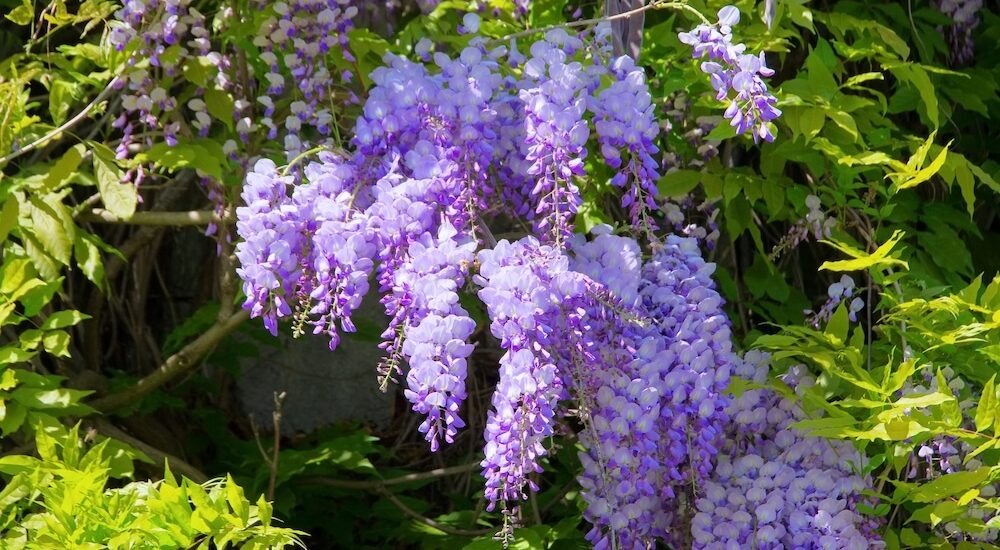Pruning Wisteria is not essential where they have room to roam and colonise a wall frame or sturdy trellis. Wisteria will wander and flower in this situation without any pruning. However, if the Wisteria is growing in a confined space, or at least needs to be constrained, then pruning will be necessary as set out below.
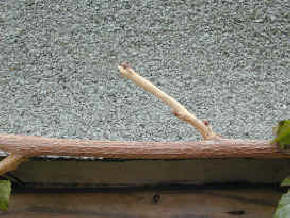 If you want the best flowers on your Wisteria, then it is important to prune your Wisteria, and prune your wisteria at the right time. We show you when to prune wisterias, and also how to prune wisterias.
If you want the best flowers on your Wisteria, then it is important to prune your Wisteria, and prune your wisteria at the right time. We show you when to prune wisterias, and also how to prune wisterias.
Wisteria is a strong growing vine, and will soon become a tangled mess if left to its own growing habits. As we tend to grow wisterias as ornamental plants – climbers – then protocol decrees that they should be kept under control!
To keep Wisteria under control they should be pruned twice each year. Prune like this to ensure maximum flower and the pruning will also keep your Wisteria within set limits!
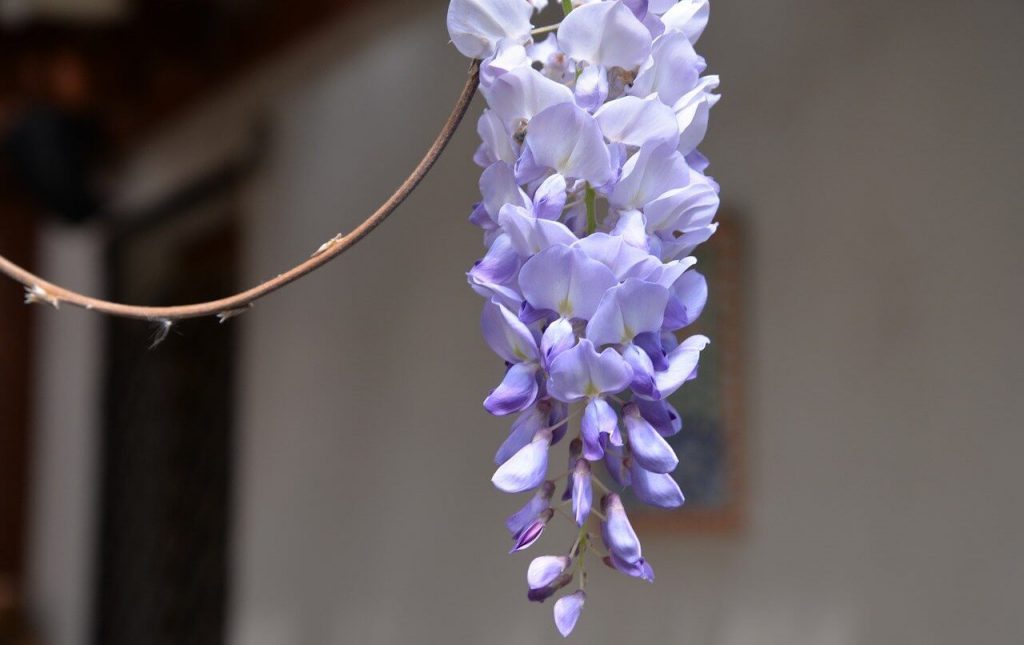
When to Prune Wisterias
Autumn Pruning of Wisterias
Autumn or early winter pruning of wisterias simple brings the rapid summer growth into some manner of tidiness, and will most certainly allow for easier pruning in the early spring. Whilst pruning wisterias in the manner set out below is best, the second best option is for trimming wisterias with a good hedge clipper. That will at least allow for easier access in later winter.
Prune wisteria in the autumn by pruning all of the current side-shoot growths back to within 30-40cms of the main lateral branches. This should leave 4-6 leaves or leaf buds on each side-shoot. Any side shoot required to extend or train the framework should be left and trained as required and not be pruned!
Winter – Early Spring – How to Prune Wisteria
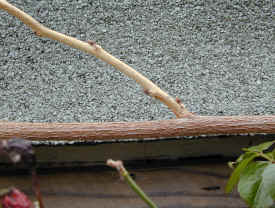 In January-February, cut back Wisteria side shoots back even further – 6-10cm long, leaving only 2 or 3 buds on the side-shoot. These will be the flowering spurs on your wisteria. There is no need to prune the wisteria to an outward-facing bud.
In January-February, cut back Wisteria side shoots back even further – 6-10cm long, leaving only 2 or 3 buds on the side-shoot. These will be the flowering spurs on your wisteria. There is no need to prune the wisteria to an outward-facing bud.
These pruning operations should be carried out each year. The only shoots to be left ‘unscathed’ are those which are required to extend the size or direction of your wisteria.
Any lateral training of the new lateral framework needs to be done at this time unless it was completed with the autumn trimming session
How to prune wisteria side shoots to encourage flowering instead of new stem shoots.
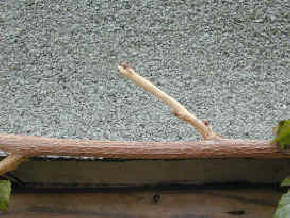 A wisteria side shoot – lateral, ready to be cut back hard in late winter pruning (Jan/Feb).
A wisteria side shoot – lateral, ready to be cut back hard in late winter pruning (Jan/Feb).
The lateral – having been cut back to 3 buds from the main branch leader. The pruning cut is immediately above a bud.
This will allow the flower buds – which are on the older wood nearer the main stem – to receive the food reserves which are surging up through the vine at this time. If these shoots are left un-pruned, as well as developing into an untidy mess, the ‘goodness’ will be allowed to creep up through the shoot and give even more growth, both hiding the flowers, and depriving the flower buds of the wisteria the food reserves.
A great specimen of wisteria, that has been pruned correctly. learn about the general care of Wisterias here.
Regular Pruning of this wisteria is essential, for whilst it has the space to roam unhindered, the pathway below would soon be rendered unusable as the wisteria would soon take over the whole arch.
Conclusion
How to Prune Wisterias. A tidying-up operation in autumn, followed by hard pruning your wisteria in the late winter
When to Prune Wisteria – October is the optimum time for the autumn pruning of wisteria. Most of the foliage will have dropped. February is the good time for winter pruning but no later than early March.
The main reason for pruning wisterias in the manner described above is for all of the energy of the plant to be focussed on the flower buds – near the main stem, and not diverted into the stem growth system at the expense of flowers.
If you decide not to prune your wisteria, then over the years the flowers on the plant will become smaller – for the energy will be focussed on providing new stem growth. So, prune your Wisterias regularly to be sure of larger flowers.
